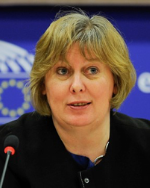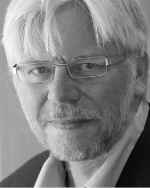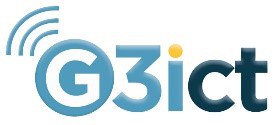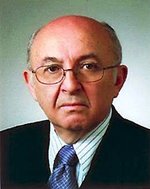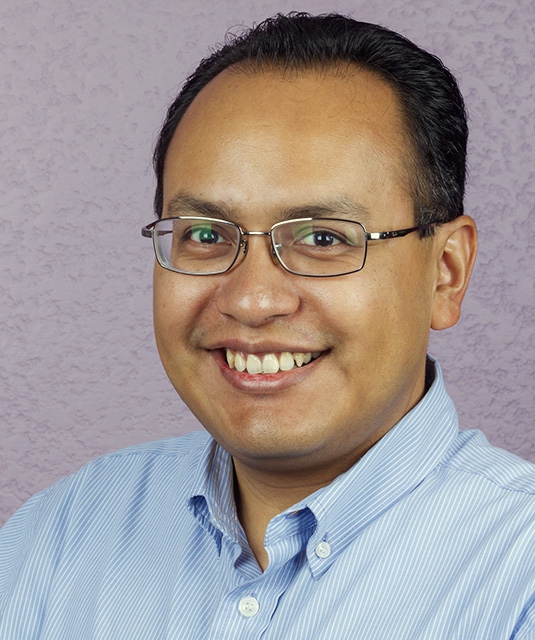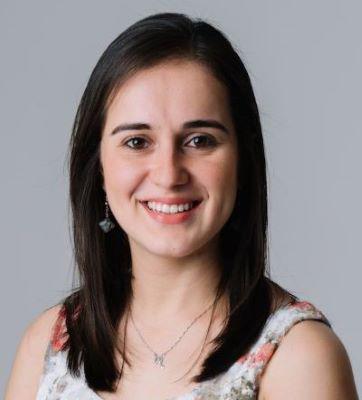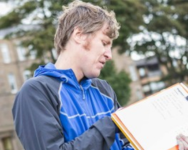Creating Smarter and More Accessible Cities: Cities that Care for Us
Posted on November 06, 2016
Victor Santiago Pineda is a global expert on disability policy and the Senior Research Fellow at the Haas Institute for a Fair and Inclusive Society at the University of California Berkeley.
Upon completing the intensive negotiations that shaped the New Urban Agenda, I realized that we, persons with disabilities and our allies, have a tremendous responsibility to lend our talents to the building of smarter and more accessible cities. Eight months ago, there was only one reference to persons with disabilities in the draft outcome document, and by the day it was launched in Quito, Ecuador, we had secured 15 references to persons with disabilities, including a standalone paragraph.
States commit to promote appropriate measures in cities and human settlements that
"facilitate access for persons with disabilities, on an equal basis with others, to the physical environment of cities, in particular to public spaces, public transport, housing, education and health facilities, to public information and communication, including information and communications technologies and systems, and to other facilities and services open or provided to the public, both in urban and rural areas."
For social justice advocates, and those that promote the concept of Rights to the City this was a tremendous achievement. The language is supportive of diversity, and the dignity of persons with disabilities. It also points the many ways that local authorities should consider the rights of persons with disabilities.
The New Urban Agenda that was launched in Quito last month sets out a global framework and offers guidelines on how our cities should be built and sets out specifications for the deployment of information and communication technologies. The global community has a tremendous opportunity to get digital accessibility right, but equally a huge responsibility not to perpetuate the types on exclusions that have left persons with disabilities and older persons behind. Cities today are messy, and full of inequalities and technology could help empower persons with disabilities and older persons with vital information and services. For someone who may have difficulty seeing or walking without assistance, a city could be an intimidating and dangerous place. However, we also know that with proper designs and some considerations, these same streets could be welcoming, safe, and inviting for all by deploying audible cues when crossing the street, or deploying sensors or way finding devices to provide visual or haptic cues.
As national governments formally sign on to the New Urban Agenda, they will need to work with local governments, city managers, and civil society partners to make it come to life and to specify the concrete steps that need to be taken to ensure that smart cities are also accessible cities.
There continues to be a need to bring together industry, government, and civil society experts and practitioners to define how a Smart City can also be a digitally inclusive city. I am proud of the partnership between World Enabled and G3ict and our work to develop and deliver useful information on making Smart City services accessible to all. Our work aims to leverage technologies to develop special services for seniors and persons with disabilities to enhance their safety, health care, participation in social, economic and cultural life, employment and civic activities such as voting.
In the next few weeks we will execute a series of roundtable discussion and create a knowledge base that can infuse accessibility and innovative assistive services into Smart Cities programs worldwide. The knowledge base will consist of the following elements:
- Guiding principles for the planning and development of accessible Smart Cities programs
- Model policies for Smart Cities programs to adopt for ensuring a commitment to accessibility
- Inventory of relevant accessibility technical standards
- Database of accessible Smart Cities solutions and a platform to share best practices and transfer knowledge
- Catalog of Smart Cities indicators and metrics
- Capacity building programs for city officials, CIOs, and technology leaders
Hopefully these tools can arm local leaders with the information to make informed decisions and help ensure that any smart city initiative includes the perspectives of persons with disabilities. The unique aspect of the New Urban Agenda is how robustly it specifies that persons with disabilities should be engaged, and involved in all aspects of urban development. Urban development a long term project and will need to be planned for the longer term. We need to ensure that we future proof our cities for everyone, including persons with disabilities.






